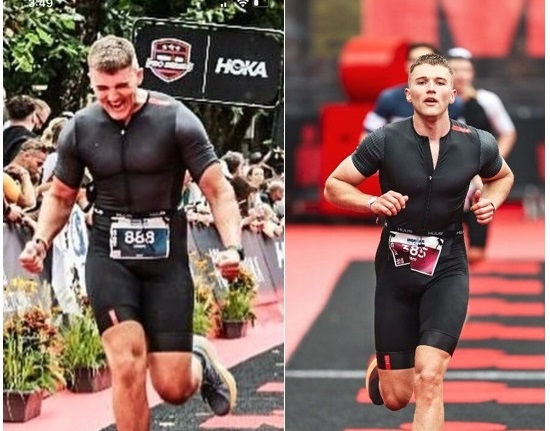14th August 2020 - So You Bought A Heart Rate Monitor- What Now?
- Patrick Walkington
- Aug 14, 2020
- 3 min read
So everyone keeps telling you that you need a heart rate monitor and how it will change the way you train and make you into a better athlete. So you go and buy one. Now what?
Firstly, you will need to set up your personal heart rate training zones. To keep things simple, we will use 5 zones: Zone 1 (Recovery), Zone 2 (Endurance), Zone 3 (Tempo), Zone 4 (Threshold) and Zone 5 (VO2 Max).
So how do you calculate your own personal heart rate training zones?
Forget calculations based on age and fitness etc. (like the famous 220 minus your age one) – they simply don’t work for the majority of people. You also don’t need to know your maximum heart rate or resting heart rate as they are also mostly irrelevant (in this case) and besides, everyone has a different one.
So what do we need to know?
Our “Lactate Threshold Heart Rate” – this is key when it comes to training.
In simple terms, when we exercise, lactic acid (or lactate) builds up in our muscles. The more lactate there is in our muscles, the more your muscles burn – it’s acid after all – until there becomes a point when your muscles can’t handle the burning anymore and temporarily stop working.
“Lactate Threshold Heart Rate” is the heart rate at which your muscles can just about handle the amount of burning that they are subjected to without temporarily stopping working.
This “Lactate Threshold Heart Rate” is different in all of us and is a key factor in how fast we can swim, bike and run and hence why many of the age and fitness etc. calculations don’t work.
E.g. Runner 1 and Runner 2 are the same age and both have maximum heart rates of 180 beats per minute and according to age calculations, they should both be able to run along easily at 140 beats per minute. As they both run around a track at 140 beats per minute, Runner 1 is running easily, but Runner 2 is really struggling and after a couple of minutes is forced to slow down. Why? Well, it all comes down to Lactate Threshold Heart Rate. Runner 1 has a Lactate Threshold Heart Rate of 160 beats per minute and Runner 2 has a Lactate Threshold Heart Rate of 130 beats per minute. Runner 1’s heart rate (at 140 beats per minute) is way below his Lactate Threshold Heart Rate (of 160 beats per minute) and therefore his muscles are working fine. Runner 2’s heart rate (at 140 beats per minute) is already above his Lactate Threshold Heart Rate (of 130 beats per minute) therefore lactate is building up in his muscles and forcing them to temporarily stop working.
So how do we work out our own Lactate Threshold Heart Rate?
Running: Take the average heart rate from a fast park run or fast 10k race that you have recently done – if you haven’t done one – go and do one! This average heart rate won’t be too far from your Lactate Threshold Heart Rate.
Bike: Take the average heart rate from the cycle leg of a sprint triathlon (as long as you didn’t just potter round) or a 10mile time trial that you have recenlty done. If you haven’t done either, go and do one! This average heart rate won’t be too far from your Lactate Threshold Heart Rate.
Or even better, get someone who knows what they’re doing to put you through your paces in a lab or on a Treadmill or a Wattbike (services which I offer).
Once you have your Lactate Threshold Heart Rate figure, you can work out your specific and personal heart rate training zones to use in training using the following percentages (LTHR = Lactate Threshold Heart Rate):
Zone 1 – Recovery <80% of LTHR
Zone 2 – Endurance 80% – 90% of LTHR
Zone 3 – Tempo 90% – 95% of LTHR
Zone 4 – Threshold 95% – 100% of LTHR
Zone 5 – VO2 Max >100% LTHR
There are various specific ways of using these zones in your training, but this is something for you to either research for yourself, or leave in the safe hands of your coach.
As a very rough guide:
Zone 1: Train in this zone to recover from hard sessions to just get the blood flowing.
Zone 2: Train in this zone to develop long distance run and bike endurance.
Zone 3: Train in this zone only when you struggle to stay in Zone 2 such as running or riding up hills.
Zone 4: Train in this zone to increase the point as which too much lactate starts to build up in your muscles.
Zone 5: Train in this zone if you want to improve your short burst speed.
Coach Pat.





Comments